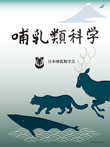Current issue
Displaying 1-15 of 15 articles from this issue
- |<
- <
- 1
- >
- >|
Field Note
-
2024 Volume 64 Issue 1 Pages 1
Published: 2024
Released on J-STAGE: February 09, 2024
Download PDF (801K)
Review
-
2024 Volume 64 Issue 1 Pages 3-63
Published: 2024
Released on J-STAGE: February 09, 2024
Download PDF (2297K)
Reports
-
2024 Volume 64 Issue 1 Pages 65-71
Published: 2024
Released on J-STAGE: February 09, 2024
Download PDF (1218K) -
2024 Volume 64 Issue 1 Pages 73-78
Published: 2024
Released on J-STAGE: February 09, 2024
Download PDF (1117K) -
2024 Volume 64 Issue 1 Pages 79-87
Published: 2024
Released on J-STAGE: February 09, 2024
Download PDF (1171K)
Guidelines
-
2024 Volume 64 Issue 1 Pages 89-94
Published: 2024
Released on J-STAGE: February 09, 2024
Download PDF (1540K)
Reports of the Meeting
-
2024 Volume 64 Issue 1 Pages 95
Published: 2024
Released on J-STAGE: February 09, 2024
Download PDF (700K) -
2024 Volume 64 Issue 1 Pages 97-98
Published: 2024
Released on J-STAGE: February 09, 2024
Download PDF (809K) -
2024 Volume 64 Issue 1 Pages 99-102
Published: 2024
Released on J-STAGE: February 09, 2024
Download PDF (860K) -
2024 Volume 64 Issue 1 Pages 103-107
Published: 2024
Released on J-STAGE: February 09, 2024
Download PDF (901K)
Award Recipients
-
2024 Volume 64 Issue 1 Pages 109-117
Published: 2024
Released on J-STAGE: February 09, 2024
Download PDF (1123K) -
2024 Volume 64 Issue 1 Pages 119-135
Published: 2024
Released on J-STAGE: February 09, 2024
Download PDF (1270K) -
2024 Volume 64 Issue 1 Pages 137-141
Published: 2024
Released on J-STAGE: February 09, 2024
Download PDF (935K) -
2024 Volume 64 Issue 1 Pages 143-149
Published: 2024
Released on J-STAGE: February 09, 2024
Download PDF (1331K)
Book Reviews
-
2024 Volume 64 Issue 1 Pages 151-154
Published: 2024
Released on J-STAGE: February 09, 2024
Download PDF (874K)
- |<
- <
- 1
- >
- >|
